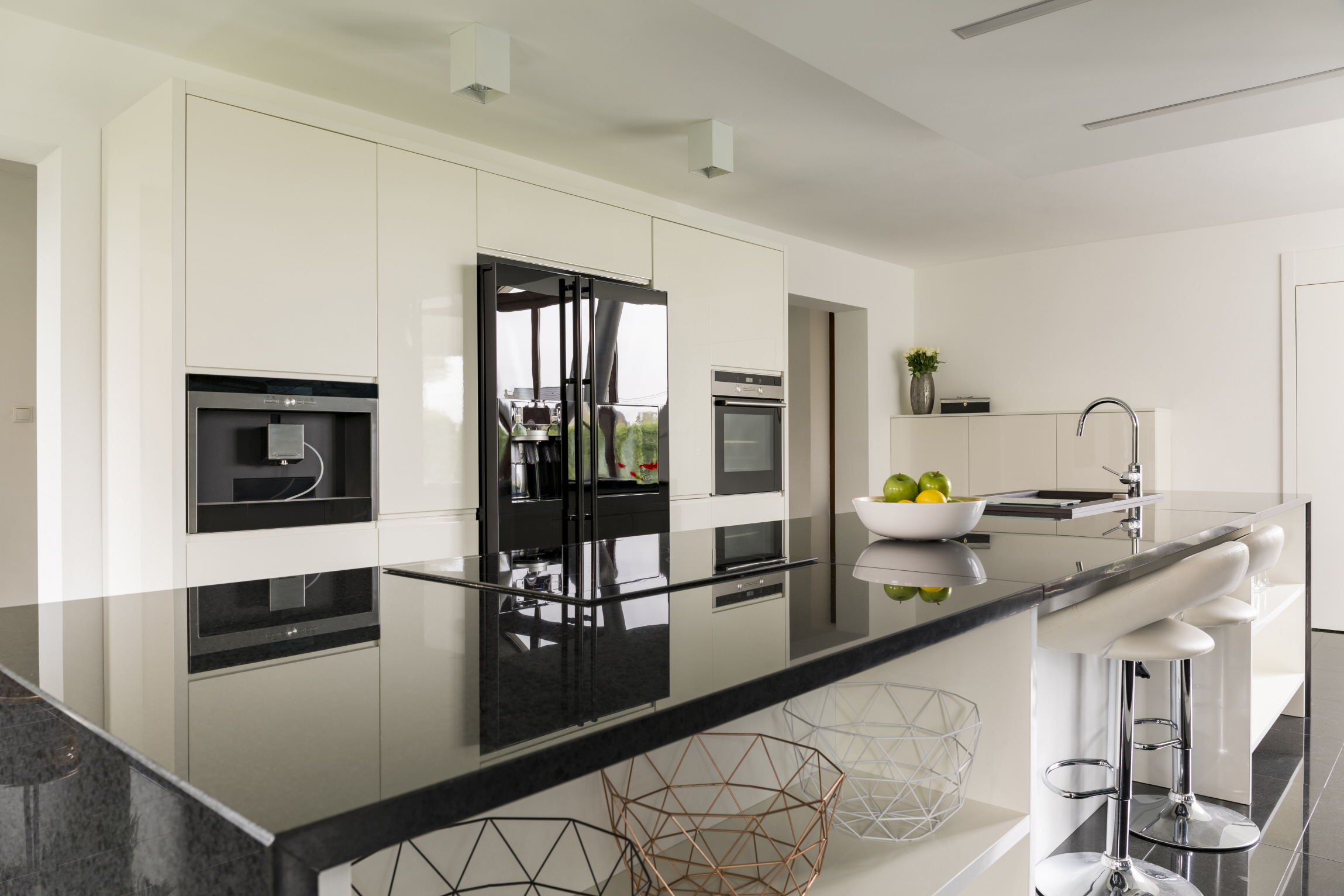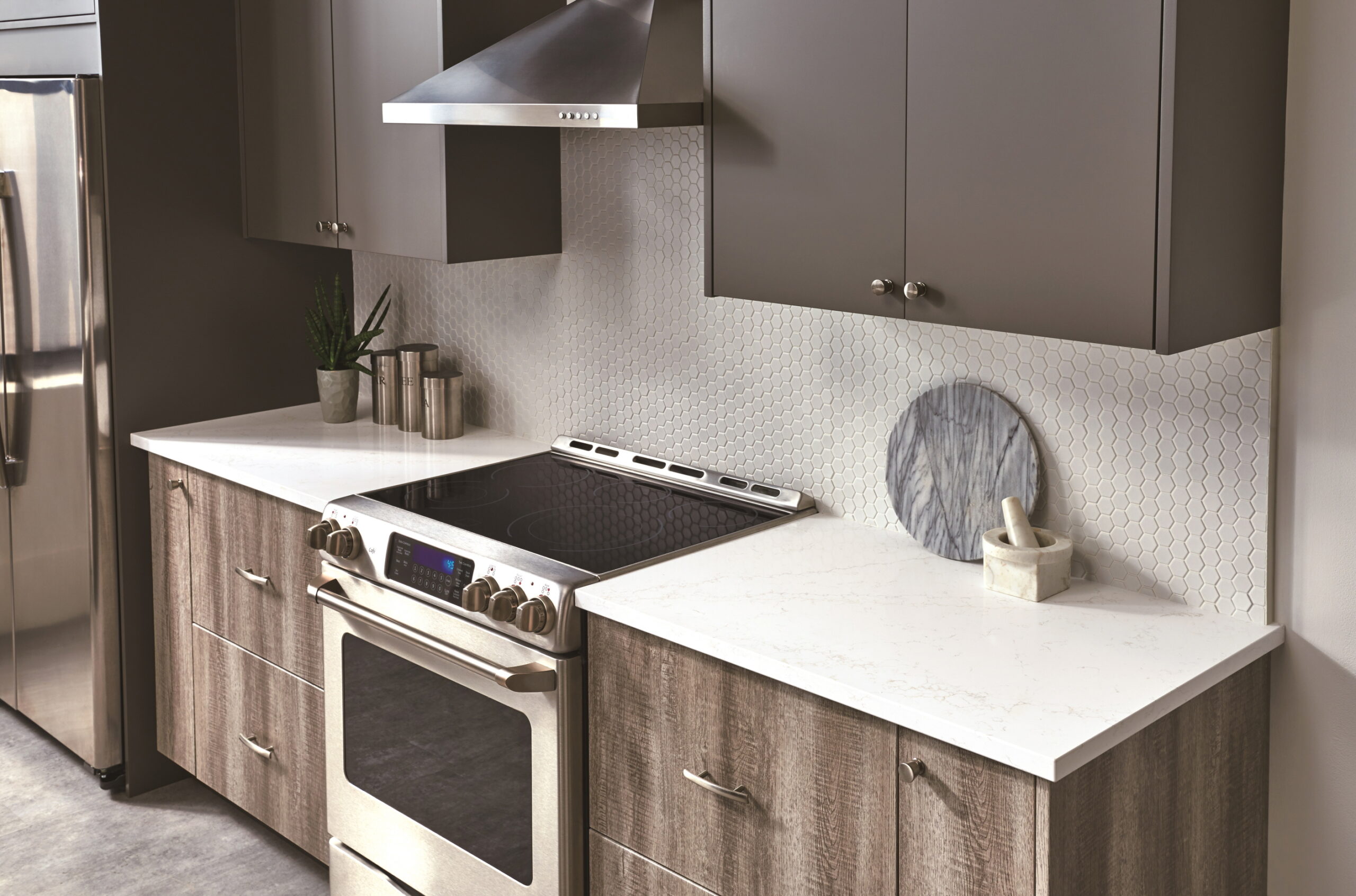Remodeling your kitchen is both an exciting adventure and a sizable investment in your home. If your objectives include enhancing functionality, updating aesthetics, or boosting resale value, grasping the average costs of kitchen remodels in 2024 is vital for effective budgeting and planning. This guide intends to explore the typical costs involved in various facets of kitchen renovation, encompassing everything from appliances to labor fees. We aim to shed light on the principal factors that influence overall expenses and share advice on how to maximize value for your investment.

What is the average cost of a kitchen remodeling?
The cost of remodeling a kitchen can differ significantly, influenced by aspects like the kitchen’s size, the quality of materials selected, and the extent of the renovation. To offer a broad perspective, it’s helpful to categorize kitchen remodels into three groups, each defined by their scale and complexity:
Typical Remodel: $10,000 – $15,000
A modest budget kitchen remodel usually concentrates on aesthetic enhancements, which can significantly improve both the look and utility of the space without the hefty price tag of major structural alterations. In this sort of renovation, common upgrades include painting or refinishing cabinets to revitalize their appearance. Swapping out dated hardware for modern handles and knobs can also serve to rejuvenate and unify the kitchen’s new design. Light fixtures, faucets, and sinks are frequently updated as well, providing both a fresh visual accent and improved efficiency.
One of the pivotal elements in a cosmetic kitchen renovation is the installation of new appliances. Choosing energy-efficient appliances can yield long-term cost savings on energy bills while contemporizing the kitchen’s ambiance. This budget-friendly approach is perfect for homeowners aiming to rejuvenate their kitchen, enhancing its attractiveness and functionality without delving into deep construction. By prioritizing these practical and economical upgrades, a kitchen can be easily transformed to create a welcoming space that reflects the homeowner’s personal taste and meets their needs.
Moderate Kitchen Remodel: $15,000 – $29,000
A moderate kitchen remodel delves into more substantial renovations, markedly enhancing both the functional and aesthetic aspects of the kitchen. This upgrade typically includes either refacing or replacing the existing cabinets, which instantly revamps the kitchen’s look and improves storage options. Another major feature is the countertop overhaul, where homeowners have the chance to introduce materials like quartz, granite, or premium laminates. These choices not only boost the kitchen’s beauty but also offer surfaces that are both durable and easy to care for.
Additionally, updating the flooring is a pivotal element, with options like hardwood, tile, or luxury vinyl available to significantly change the kitchen’s overall feel and functionality. This budget level provides considerable scope for personalization, allowing the selection of higher-quality materials and finishes that truly reflect the homeowner’s taste. The outcome is a kitchen that not only looks and feels upscale and contemporary but is also more aligned with the daily living needs, making it a delightful and efficient space for cooking, dining, and hosting.
Large Kitchen Remodel: $29,000 – $64,000
A large kitchen remodel entails an expansive range of renovations intended to utterly revamp the space. This often includes significant structural modifications such as demolishing walls to embrace an open-plan layout, installing islands or peninsulas to enhance workspace and provide additional seating, and rerouting plumbing and electrical systems for a new configuration. These substantial transformations allow for a complete reenvisioning of the kitchen’s layout, optimizing it for contemporary living and socializing.
Beyond these major structural changes, high-end appliances are typically introduced, advancing the kitchen’s functionality with professional-level features and sleek design. The selection can range from integrated refrigeration and dual-fuel stovetops to specialized wine coolers and cutting-edge smart technologies that streamline usability while improving energy efficiency.
The installation of luxury finishes further distinguishes the kitchen, with custom cabinets made from choice woods, exotic stone countertops like marble or quartzite, and statement backsplashes using detailed tile or glass mosaics standing as testaments to refined taste.
Budget provisions in this category extend to custom design elements personalized to the homeowner’s style and functional desires. The strategic use of lighting—including statement chandeliers, subtle under-cabinet LEDs, and recessed overhead lights—crafts an ambiance with depth and variation. High-quality flooring choices, such as broad hardwood planks, oversized tiles, or even radiant-heated floors, add a layer of comfort and aesthetic appeal.
Moreover, a vast remodel offers the versatility to add opulent features like a butler’s pantry for extra storage and preparation areas, a dedicated coffee bar for easy morning routines or sophisticated soirees, and seamless connections to outdoor areas through expansive sliding doors or picture windows.
Ultimately, a large kitchen remodel caters to those looking to completely reinvent their culinary space. It affords them the liberty to integrate the finest materials, state-of-the-art appliances, and tailor-made design details, resulting in a kitchen not just of exquisite beauty and luxury but one that embodies the homeowner’s unique lifestyle and discerning tastes. This remodeling level assures that each nuance is carefully considered, turning the kitchen into a stunning, functional haven—the true heart of the home for years to come.
What Are the Costs of Key Kitchen Renovation Components?
To gain insight into the typical expenses of a kitchen renovation in 2024, it’s helpful to examine the costs associated with key remodeling components:
Appliances
The cost of appliances is a major factor in the overall expense of kitchen remodelling, with prices fluctuating based on brand reputation, size, technological features, and energy efficiency. Opting for high-end appliances from well-known brands might involve a steeper initial outlay, yet these items tend to deliver on both performance and longevity. Such an investment not only elevates the kitchen’s functionality but also its design appeal, ensuring that the renovation achieves its full potential. Notably, premium appliances often incorporate cutting-edge technologies, including smart features that facilitate ease of use through remote control and monitoring, thereby optimizing convenience and operational efficiency. While the upfront cost may seem lofty, the benefits of extended warranties and superior customer support offer long-term assurance and value. On the other hand, for those working within a tighter budget, the market presents a range of mid-tier appliances. These options strike an appealing balance between cost, quality, and style, enabling homeowners to realize their vision of a modern, efficient kitchen without overextending financially.

Cabinets
Cabinetry is a significant component of kitchen renovation budgets, with costs influenced by materials, workmanship, and customization options. Stock cabinets represent the most economical choice, providing basic functionality and style. For those requiring more tailored solutions, semi-custom and custom cabinets offer increased flexibility in terms of design and personalization, though at higher price points.
Custom cabinets enable homeowners to incorporate personalized features such as specialized storage spaces, unique finishes, and bespoke hardware. This customization elevates both the function and aesthetic of the kitchen significantly. Semi-custom options serve as a compromise, presenting more design choices than stock models while remaining more affordable than fully custom solutions.
When selecting cabinetry, it is crucial to balance your budget with the potential long-term benefits and enhancements to your kitchen. Higher-quality cabinets not only offer greater durability and a more unified appearance but may also boost your home’s resale value. For budget-conscious homeowners, an alternative to purchasing new cabinets is refacing existing ones, a cost-effective way to update your kitchen’s look without the commitment and expense of a full replacement.
Countertops
Countertops stand out as a pivotal element in kitchen design, significantly influencing both the space’s functionality and visual appeal. The expense associated with countertops hinges on the choice of material, with a spectrum that spans from budget-friendly laminate to high-end options like quartz or natural stone. Additional considerations that affect cost include the color, pattern, thickness, and edge detailing of the countertops.

Backsplash
A backsplash serves a dual purpose in the kitchen: it enhances visual appeal while also safeguarding the walls against moisture and stains. The material chosen for the backsplash—be it ceramic tile, glass mosaic, or natural stone—plays a significant role in determining the overall cost. Moreover, the installation process, including labor and grouting fees, contributes to the final expenses.
Flooring
Flooring is a crucial component of kitchen design, essential for its durability, comfort, and aesthetic appeal. The prices for flooring materials range extensively, from economical options like vinyl or laminate to more upscale choices like hardwood or porcelain tile. It’s important to also consider the installation costs when planning your overall budget for kitchen flooring.
Installing a New Sink and Faucet, New Pipes
Upgrading plumbing fixtures, including sinks and faucets, can significantly improve the functionality and aesthetic appeal of your kitchen. The installation cost for a new sink and faucet is influenced by the material, style, and the installation’s complexity. Furthermore, should there be a need to relocate or upgrade plumbing lines, this could increase the overall cost of the project.
Electrical
Electrical upgrades are often required to support new appliances, lighting fixtures, or additional outlets in the kitchen. The cost of these electrical modifications depends on the project’s scope, including tasks like installing additional circuits, upgrading wiring, or incorporating features like dimmer switches and under-cabinet lighting.
Lighting
Effective lighting plays a critical role in crafting a functional and welcoming kitchen atmosphere. The price of lighting fixtures is influenced by their style, size, and energy efficiency. Popular choices for kitchen illumination include LED recessed lights, pendant lights, and under-cabinet lighting, each catering to different areas of the kitchen.
Gas Lines
If your kitchen remodel includes switching from electric to gas appliances or involves relocating gas lines, be prepared for additional costs due to the installation or modification of gas lines. It is crucial to hire a licensed professional for any gas-related tasks to ensure both safety and adherence to building codes.
Wall and Ceiling Renovation
Wall and ceiling renovations, including repairing drywall, adding insulation, or installing new trim, add to the overall cost of a kitchen remodel. The scope of renovation and the condition of existing surfaces determine the necessary work and associated expenses.
Storage and Organization
Incorporating efficient storage solutions and organizational features can greatly enhance your kitchen’s functionality and help maintain a clutter-free environment. The cost of storage upgrades, such as pull-out shelves, drawer organizers, or pantry systems, depends on the project’s size and complexity.
Labor Costs
Labor costs are a substantial part of any kitchen renovation budget, fluctuating based on the work’s scope, the project’s complexity, and the contractor’s experience and expertise. To ensure a well-informed decision, it’s crucial to get multiple quotes from reputable contractors and to have a clear understanding of the work scope and timeline before moving forward with any renovations.
Design Fees
Design fees may be applicable if you’re engaging a professional designer for your kitchen remodel. These fees can vary based on the designer’s experience, project complexity, and the range of services provided. Ensure you discuss fees upfront and understand what is included in the design package to avoid surprises.
General Contractor Fees
Hiring a general contractor to manage your kitchen remodel usually means their fees are encompassed within the total project cost. These fees cover essential services such as project management, subcontractor coordination, and ensuring work complies with specifications and building codes.
Building Permits
The scope of your kitchen remodel may necessitate obtaining building permits from your local municipality. Permit fees are subject to variation, influenced by the project’s type and size, and often correlate with the overall project cost. Budgeting for these fees is crucial, and securing all required permits is imperative before initiating any work.
Appliance Moving and Storage
Should your kitchen remodel include updating appliances, consider the costs associated with moving and potentially storing these items. Hiring professional appliance movers ensures safe transport to and from your home. Moreover, if there’s a need for temporary off-site storage, be prepared for additional storage fees.
Remodel vs. Renovation vs. Expansion
Understanding the distinctive processes of remodeling, renovation, and expansion is crucial before embarking on a kitchen renovation project:
- Remodeling encompasses modifications to the kitchen’s existing layout, fixtures, and finishes without changing the space’s fundamental structure.
- Renovation focuses on revitalizing the kitchen’s look and functionality with cosmetic enhancements, such as new cabinets, countertops, and floors.
- Expansion is the process of physically enlarging the kitchen’s area by demolishing walls, adding to the existing square footage, or integrating adjacent spaces for a more open and spacious layout.
Deciding whether to remodel, renovate, or expand hinges on your particular needs, objectives, and financial plan for the project.
Frequently Asked Questions
For further insight into the typical costs of a kitchen in 2024, here are answers to frequently asked questions:
What Typically Goes Into a Kitchen Remodel?
A standard kitchen remodel includes upgrades to the cabinets, countertops, appliances, flooring, lighting, and plumbing fixtures, along with a new backsplash. The scope may also extend to structural modifications, electrical updates, and repairs to walls and ceilings, depending on the project’s reach.
What Are the Major Costs in Kitchen Remodeling?
Cabinetry, countertops, and appliances usually represent the biggest expenses in a kitchen remodel. These key elements form the bulk of the budget due to their substantial effect on the kitchen’s look and function.
How Much Value Can a Kitchen Remodel Add to a Home?
A well-implemented kitchen remodel can significantly boost a home’s market value and attract potential buyers. Industry insights suggest that homeowners might recoup between 70% to 80% of their investment, underlining the financial benefit of such renovations.
What Is the Average Cost for a Large Kitchen Remodel?
Remodeling a large kitchen generally costs anywhere from $29,000 to $64,000. Factors influencing this price include kitchen size, materials quality, and the renovation’s complexity. Extensive remodels can entail comprehensive changes such as altering layouts, making structural adjustments, and installing top-tier appliances and finishes.
How to Utilize an Oversized Kitchen Space?
With an oversized kitchen, you can explore various design avenues: establish separate zones for cooking, dining, and socializing; optimize space with bespoke storage systems; add an island or breakfast bar for more work surfaces and seating; and amplify the natural illumination with expansive windows or skylights.
The cost of a kitchen remodel in 2024 is subject to a range of factors, including kitchen size, material quality, and the project’s overall scope. It’s important for homeowners to understand the expenses associated with crucial renovation aspects. When considering design preferences, functional needs, and potential impacts on home resale value, homeowners can budget and plan their kitchen remodels to ensure they meet their goals while remaining financially sensible.
Whether tackling minor aesthetic updates or embarking on an extensive overhaul, an investment in your kitchen can significantly boost its appeal, practicality, and value. If you’re planning a kitchen project and seek personalized solutions that align with your vision and budget, do reach out to us at LX Hausys. We’re ready to assist with all your kitchen remodeling and renovation ambitions.


